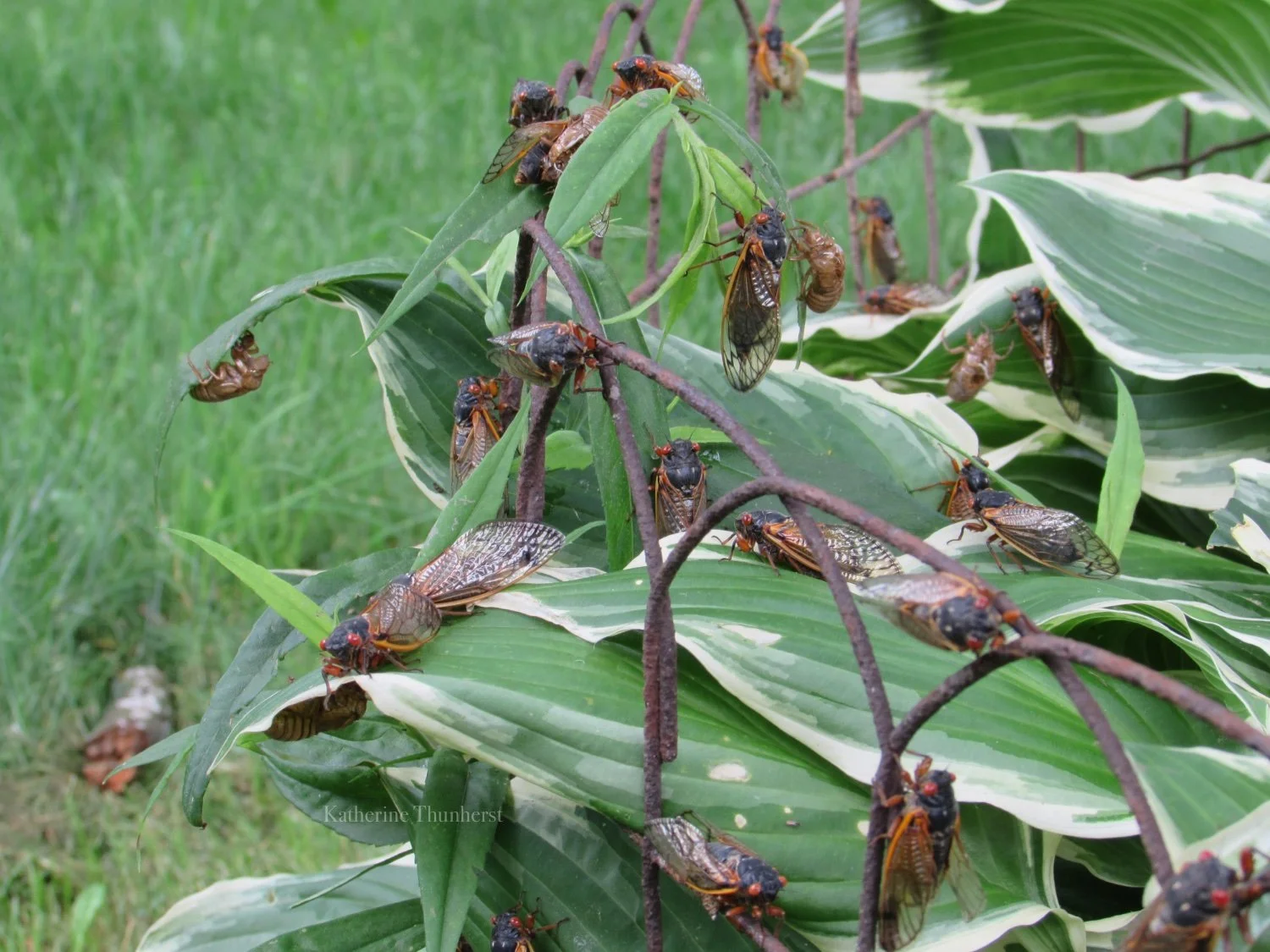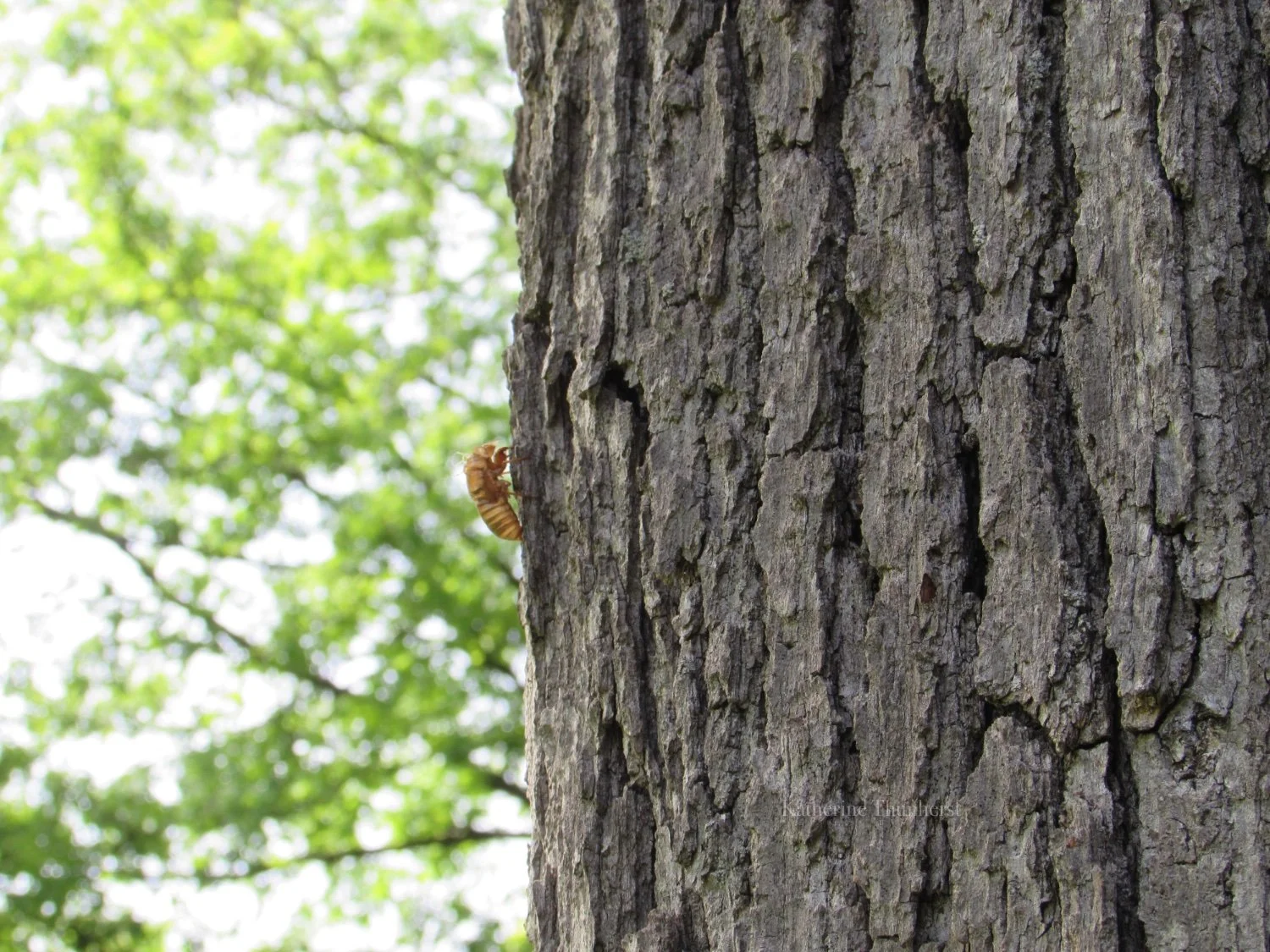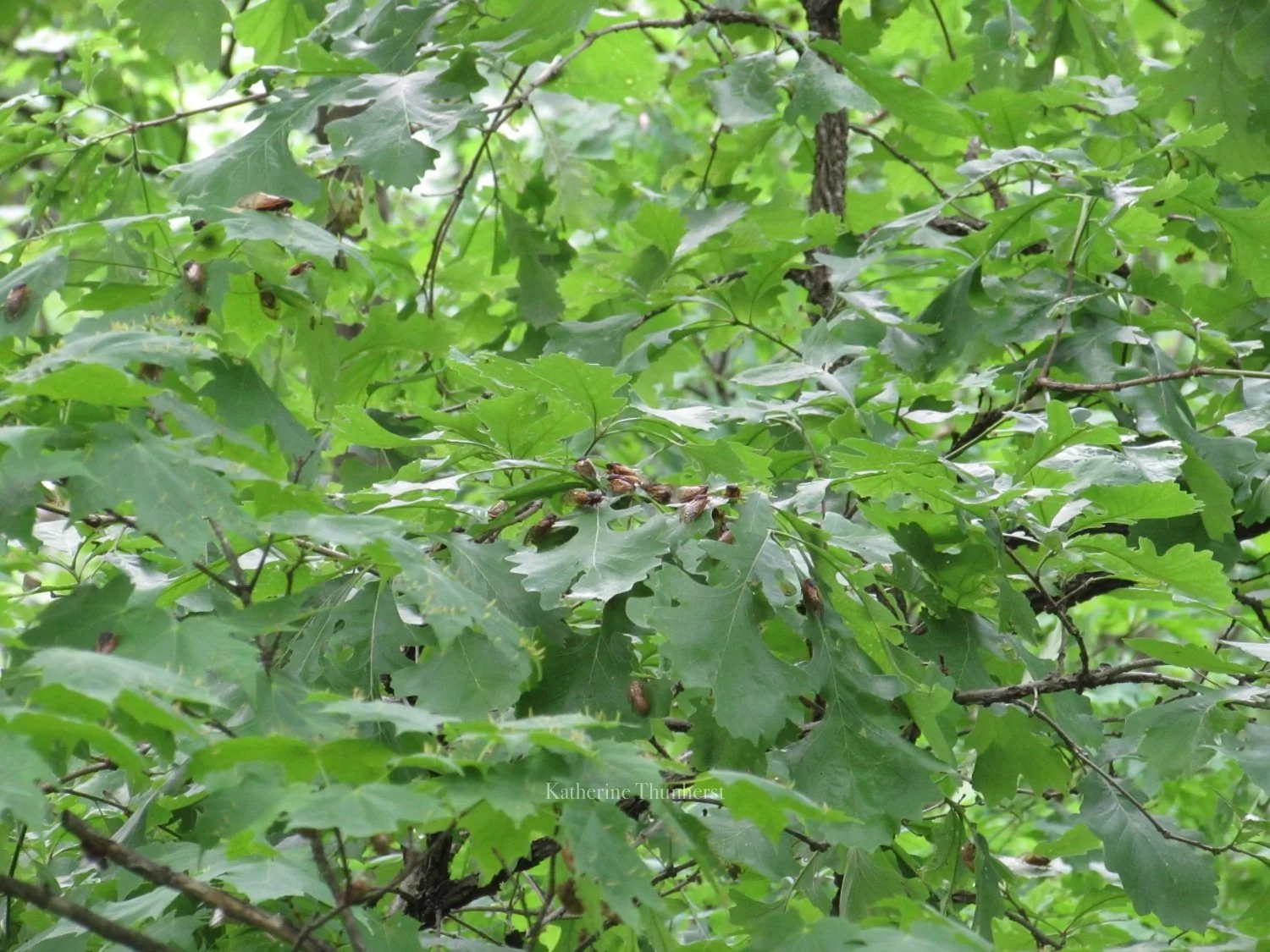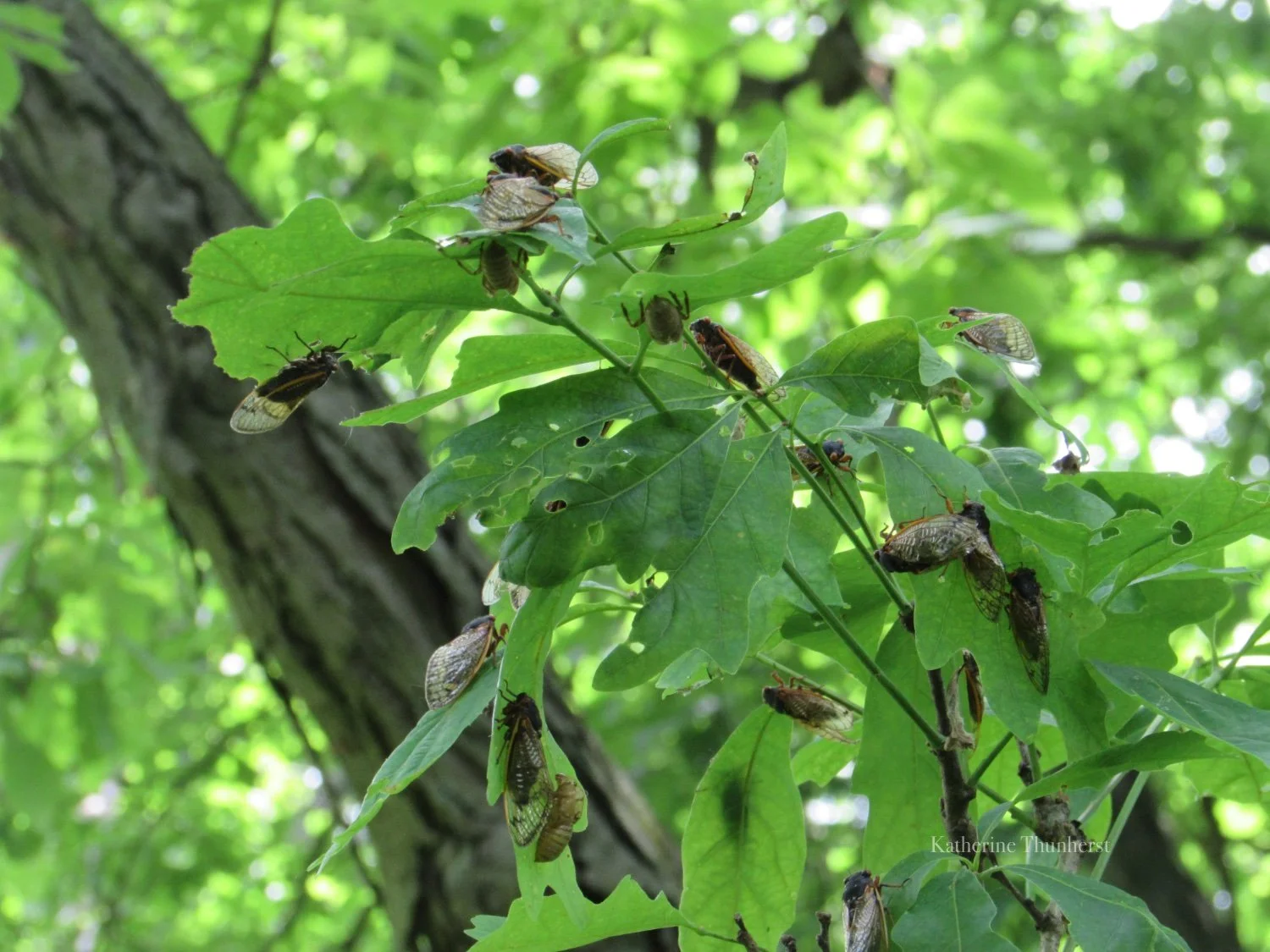After spending over a decade underground, a periodical cicada climbs up a tree.
A steady roar sounded in the woods. The tree canopy shimmered with traveling fixtures of light that bounced off transparent wings. I stood outside and took in the sights and sounds. Then I noticed someone on my shoulder. This someone was about two inches long with a dark body, yellow-tinted wings, and a pair of bulging red eyes. My company was a cicada.
Completely docile and relatively uninterested in me, the cicada eventually left with better things to do. It was one of millions of periodical cicadas that now fill much of the Midwest region to the delight of some and horror of others. I myself am delighted.
This year is an extra special year for the periodical cicadas. For the first time in 221 years, two different cicada broods have emerged simultaneously with an overlapping range in certain areas. Brood XIX emerges every 13 years. Brood XIII emerges every 17 years.
The hollow molt of a cicada is left behind and still clings to the spot in which it was molted.
Cicada molts are found everywhere, including on the stems and petals of daisies.
Both broods had been living underground for over a decade, feeding on roots. Then they tunneled up to the earth’s surface and emerged as pale wingless nymphs. They now proceed to crawl up trees, grass blades, flower stems, houses, or any vertical structure that they can grip and begin shedding their exoskeleton. The cicadas exit their former skins as adults, leaving their hollow molts everywhere.
Cicadas populate a hosta and decorative fence.
While crawling is an option, adult cicadas can also fly from tree to tree with their new wings and search for a mate. Eggs are laid in trees. After hatching, the next generation will fall to the ground and proceed to burrow down into the darkness, not venturing back up to the surface until 13 or 17 years have passed.
The tree canopy is a popular destination for the cicadas. This is where much of the shrills come from. Sunnier weather adds to the decibels.
This is a tree branch where cicadas can see and be seen. Also note that the holes in the leaves were not the result of hungry cicadas. Someone else has been dining here.
I have been thoroughly enjoying observing these insects. Unapologetically numerous and loud, they have taken over in such a peaceful way. They are also yet another reminder that insects rule the world.





